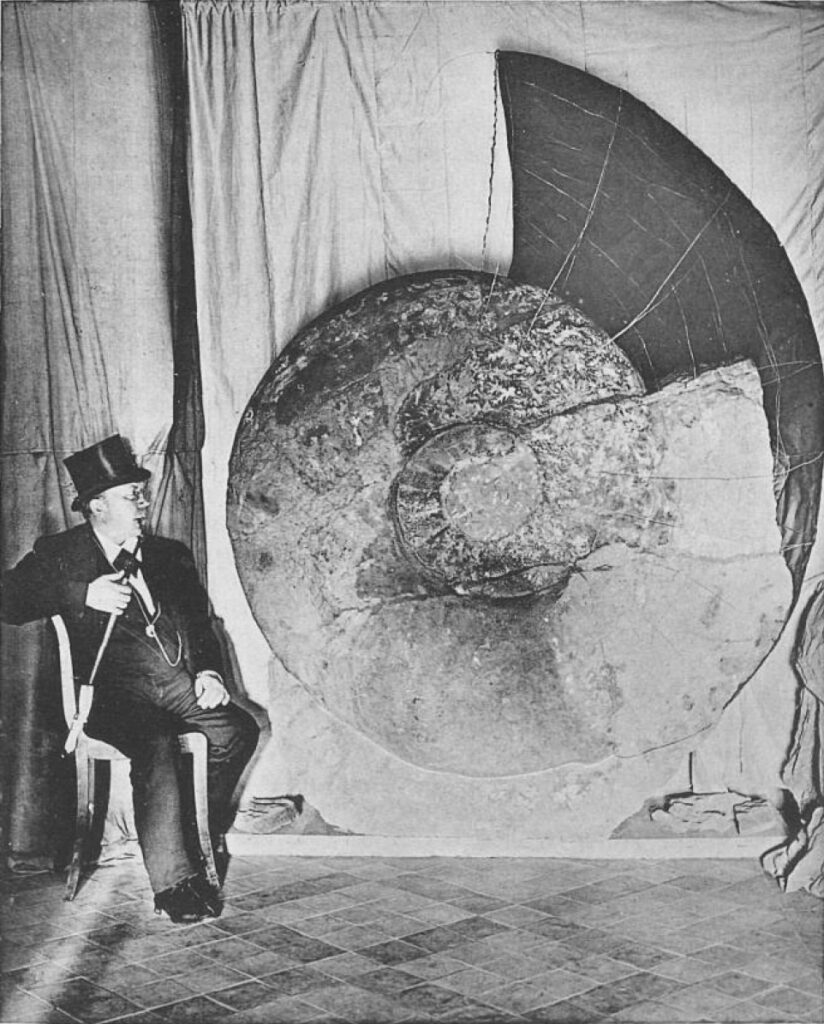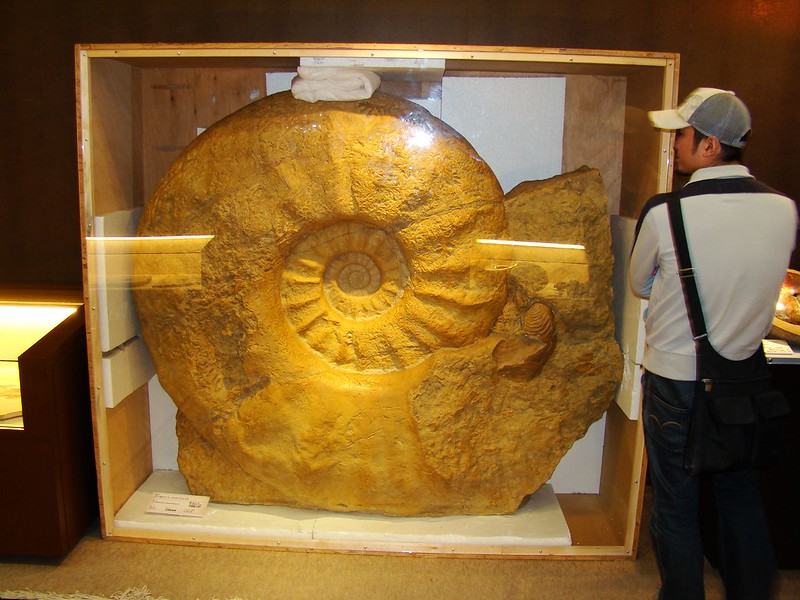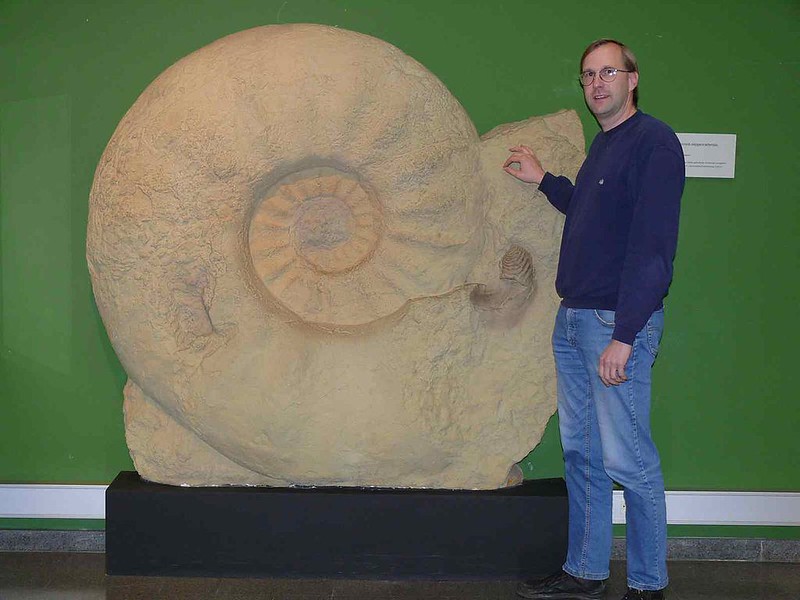Ammonites hold a fascinating place in the history of life on Earth, having evolved around 416 million years ago and being one of the most abundant creatures in ancient seas. With over 10,000 species identified from fossils, these marine creatures are well-known for their unique spiral shell design. However, few of these species can rival the astounding size of the largest ammonite fossil ever discovered, the Parapuzosia seppenradensis.

Found in Germany in 1895, this colossal ammonite fossil boasted an impressive shell diameter of 1.7 meters (5.7 feet) across, making it a truly human-sized specimen. Remarkably, an even larger fossil of the same species was discovered with a width of 1.8 meters (5.9 feet), but unfortunately, its living chamber was incomplete. Completed, it’s estimated that this extraordinary specimen would have measured between 2.55 meters (8.4 feet) and 3.5 meters (11 feet) in size.
These enormous ammonites were once thriving in the Late Cretaceous period, ruling the depths of the Atlantic Ocean. The discovery of such a massive fossil is not only an exciting find but also offers valuable insight into the species’ biology, environment and potential challenges they faced in their unique, prehistoric ecosystem.
Related: Ammolite: Exploring the Gemstone’s Origins and Beauty

Significance of the Find
The discovery of Parapuzosia seppenradensis, has remarkable implications for our understanding of these ancient sea creatures.
Such a colossal size provides valuable insights into the evolution of ammonites, especially in the context of the predatory pressures they faced. The larger size of P. seppenradensis suggests that these ammonites may have grown significantly to evade their main predators, the large marine reptiles (phys.org).
The sheer scale of this specimen also demonstrates the incredible biodiversity that existed in Earth’s ancient oceans. With over 10,000 recognized species, ammonites were once among the most abundant creatures in the seas and have left a long and diverse fossil record for scientists to study (National Geographic).

The study of this remarkable find contributes significantly to our understanding of the evolution, adaptations, and extinction of these fascinating sea creatures. The research surrounding this giant ammonite continues to unveil new discoveries, enriching our knowledge of the marine environment throughout Earth’s history.
Although the discovery of the Parapuzosia seppenradensis fossil dates back over a century, it still stands today as a testament to the fascinating diversity of ancient marine life. As scientists and enthusiasts keep unearthing new insights into the world of ammonites, it serves as a humbling reminder that the secrets of Earth’s past still hold many surprises waiting to be unveiled.
A Closer Look At The Largest Ammonite Fossil Ever Found
- Online rock and mineral club for collectors of all levels!
- Find community with like-minded rock and mineral enthusiasts.
- Monthly Giveaways!
- Free Access to Entire Digital Library of Products (current and future products)*


